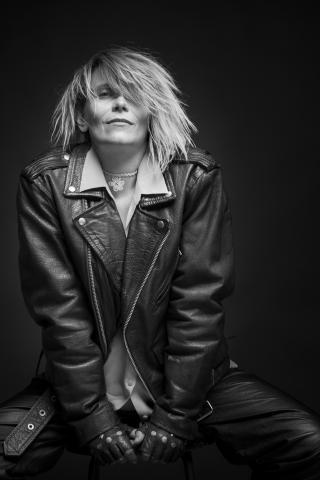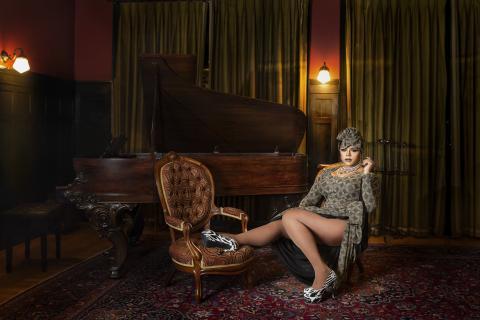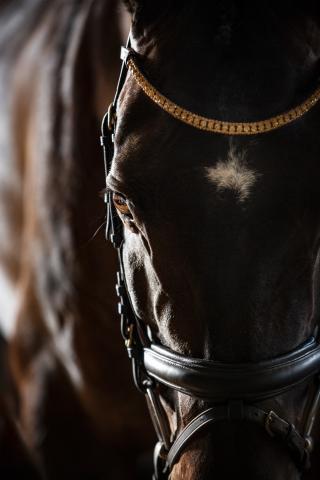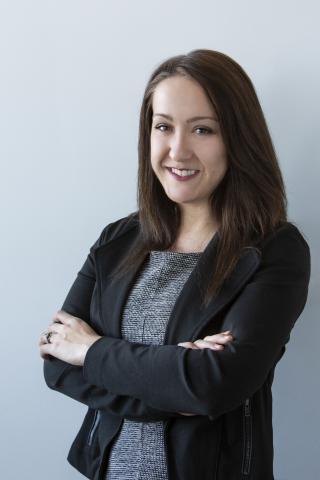Photo: Katy Whitt
BACHELOR OF DESIGN IN PHOTOGRAPHY, 2011
ALUMNI DISCOVERY INITIATIVE, INTERVIEW BY JOANNE FISHER, 2015
Joanne FISHER: When did you graduate from ACAD and what was your degree?
Katy WHITT: I graduated in 2011 with a Bachelor of Design in Photography.
FISHER: Did you start at ACAD knowing that you wanted to go into Photography?
WHITT: I did. I transferred to ACAD from University of Victoria where I was doing a double major BSc/BFA. In my second or third year the department head, Vicky Alexander, told me that I had a strong commercial proclivity and recommended that I go into a commercial photography program. ACAD, Concordia, NSCAD, and OCAD are the four Canadian schools that offer commercial photography programs. I looked at the work of ACAD’s professors and liked what I saw.
FISHER: Tell me what you liked about ACAD and the insights you had while being there.
WHITT: What I enjoyed the most was the knowledgeable professors I had. The fact that they were practicing in a variety of genres was very important to my education.
A strong point for ACAD is that the professors have current industry knowledge. They were very honest about the industry: that you really have to love it, and you have to be ok with having some tough years. You really have to get involved in your unions, with your own education, and doing some [photography] assisting.
I still keep in touch with some of my professors. The community at ACAD is awesome. That’s really why you’re there as an artist. You’re in school to learn, glean information, network, and meet people who will help you as artists. It’s a gold mine of knowledge. I was really happy to have the close-knit group of people at ACAD. Because the classes are small, you get to know everybody really well.

Photo from the exhibition Ontogenesis curated by Katy Whitt and Yasmin Nurming-Por at The Banff Centre
FISHER: How did your work evolve over the course of the program and after graduation?
WHITT: I went from doing fine art black and white photography and large-scale printing to being thrown into a digital situation in ACAD’s Photography BDes., so I had to learn all new tools. My technical skills improved by learning my professors’ techniques, and all of the important facets of image making. There are lots of picky things about the process that you don’t think of until you learn to think in the way I was taught.
I loved learning about iconography and historical images. Combining that knowledge into an image has a statement beyond ‘I made that’ or ‘it looks cool.’ You move from that mindset to one of paying homage to historical events and images you love. This allows you to become innovative and creative with your own imagery. Over the years, it’s been great to see everybody’s own style emerging.
By graduation I was already working. I had a few gigs lined up while in school and afterwards. I went immediately to a corporate commercial studio where I assisted for a couple of years. Then I took a leap into freelancing — that was scary. I had maybe three jobs but needed more work to make a successful career out of it.
I now have a commercial photography business. I also own and run Studio Cartel, which is a fabrication studio here in Calgary. I started it with another ACAD alum, a University of Calgary alum, and two self-directed artists. It kind of feels like ACAD – someone is in there printing, another is shooting photographs, or welding, or drafting a concept. We have our own practices and we collaborate on projects.
I’m also part of an urban art collective called Big Kitty Crew. It is a pan-Canadian female artist collective. We created our own network. We nominate people whose art we love, do juried shows, and show our work across Canada. It is such a good connection.
FISHER: It sounds like you are very active in different groups.
WHITT: There’s a lot of crossover. It’s important to be active and out there talking to people. This is a pet project with a bunch of ladies and it speaks to all of us. It’s definitely gaining momentum.
FISHER: As an alumnus, how would you like to see ACAD support its alumni?
WHITT: I think it’s really important for ACAD to stay in touch with its alumni. We had one alumni dinner and it was so cool to hear what everyone is doing and to see how motivated and successful a lot of the alumni are.
ACAD doesn’t have a hiring network right now, but to have an alumni network set up might give people the ability to connect. It doesn’t have to be reunion style where people are required to attend, but just something to have the opportunity to participate in or join. I think that would build a strong community at ACAD. It would also provide access to more teachers if they expand into more MFA programs as well.
It’s a great school. It’s a hard school. It creates a certain type of artist. Attending ACAD gives people this sort of connection that other schools don’t have. It’s nice to have a small community and keep it that way with the quality of the grads being so high.
Artists need to talk to other artists, so it is important to not be isolated. It’s important to find your people and I think ACAD does help with that. It’s vital to maintain those connections.

Whitt photographed performance artists that were a part of Roar, a celebration of queer identity that included an exhibition at Calgary's Lougheed house curated by AUA alumni Jannie Vallis in conjunction with Amanda Foote
FISHER: You talked about a hiring program. What do you mean by that?
WHITT: Some other schools have hiring programs. At Emily Carr, they really network their grads and work hard to find them positions. They have a hiring board and there is more involvement from the school in the industry.
There are a lot of practicing artists here in Calgary, so I think this would be so beneficial. At ACAD, it’s more the professors passing on upcoming positions and portfolio shows to students they think would be a good fit. There are so many ad agencies and design firms that it wouldn’t hurt for ACAD to reach out to them.
An open network would show the industry when new grads will be flooding the market and give a place to contact new grads. A network could be created for all alumni – no matter the degree. Design firms know to contact the head of the photography and design departments to ask if there is anyone new with potential, but it’s a closed communication system.
I don’t know how the logistics would work, but it could be really useful for internships and getting in on the bottom floor of a firm or for learning of a new space opening. It would be nice to have that contact with the outside world through ACAD so that it feels safe. SAIT has it.
The photography program has always been very good about putting us in touch with ad and design agencies, but it would be nice to have that available to other programs such as well.
FISHER: I’ve seen your portfolio online. You show a wide variety of subjects – fashion, portraiture, events, and horse jumping. What kind of work do you like to do for yourself?
WHITT: I grew up with horses and riding. I love shooting horses and horse jumping, even though that is commercial for me. You can’t make a horse look bad. They’re wonderful subjects.
I love doing fashion creatives, there’s so much work that goes into them from the make-up artists, stylists, and models. It’s fun trying to tell an interesting story and having something totally creative and weird that maybe wouldn’t be mainstream fashion. I love it because everyone gets to play and that’s what you want in your images.

From Whitt's Equine series
FISHER: There’s a real element of fun in your work; I’m thinking of one of your photos with the model with really long eyelashes.
WHITT: There should be a sense of play. Photo shoots are intense and a lot of hard work. It still has to be fun and inventive because sometimes you get those great shots, like the eyelashes, which you weren’t planning. For the photo you are referencing, the make-up artist suggested using hair extensions for eyelashes in that shoot. Great things like that only happen when you have a creative and open environment.
FISHER: Where do you think creativity fits in the bigger picture?
WHITT: Creativity and innovation go hand in hand. Creativity fits into life where you have to always be aware and looking for inspiration and opportunities in any facet of your life. It means designing what happens around you. It gives you the wherewithal to make opportunities happen for yourself in any situation. It’s a way to live your life with an open mind and move forward. Everybody is creative in his or her own way. Everybody is an artist in his or her own way. If you don’t use it, then you’re in for a boring time.
FISHER: What advice would you give to students for getting started in creative businesses?
WHITT: Keep your sense of open-mindedness. Be able to answer the questions such as what drives me, what makes me happy, and what can I do professionally. Artists sometimes freak out that they’re not business people - if you’ve ever had a job, then you’re a business person.
Be aware of the tons of opportunities in the arts. Creating commercial work is not selling out so long as your vision is behind it.
Don’t do commissions you don’t want to do. Someone else will do it and you don’t have to carry the guilt. Have your standards. Don’t sell yourself short. Think you’re worth it.
ACAD students get so much from their education. If you are close with your peers and professors, take constructive criticism, and build yourself up, then you will create a body of work that is marketable – if you want that.
FISHER: What is your vision when making work? What do you bring to your work?
WHITT: I bring humanity to my work. I’ve always had a bit of a journalistic bent. I just want to tell a story – have a sense of narrative and thoughtfulness. I want to have something of interest in my work. Caring is in the details. Details are important.
Your responsibility to the world, as an artist, is to show people what you know about the time you’re in right now - no matter the genre. You’re responsible for what you put out there. What you are doing had better make sense to you, so that you can explain it. ACAD teaches that for sure. Stand by your work.
I think your work is very reflective of your personality because each person is very dynamic, and if you have a lot of integrity, the care you take can be seen in your work. It’s so interesting to talk to the artist behind a body of work. I can see you in your work. I love that feeling — it makes me so happy because I, too, want to be part of my work. [Photography is] a genre where you’re not usually physically in your work, like a performance artist would be.

Lips, a selection from Whitt's fashion portfolio
FISHER: What do you want to be recognized for?
WHITT: That has changed a lot. When I left ACAD, I wanted to be a world-class fashion photographer and live in Barcelona. I would love that still! That’s still a sometime goal. Currently, I’d like to be recognized in the equestrian community. I think that horse sports are such an integral part of our culture in this city, province, and country. Horse sport has deep roots in the military and all over the world. I want to bring that back to people and show it in a different way. I would love to showcase the magnificence of show jumping and polo – the flip side of the rodeo. Horse sport hasn’t seen its glory days yet and Spruce Meadows in Calgary is one of the best venues in the world for this.
